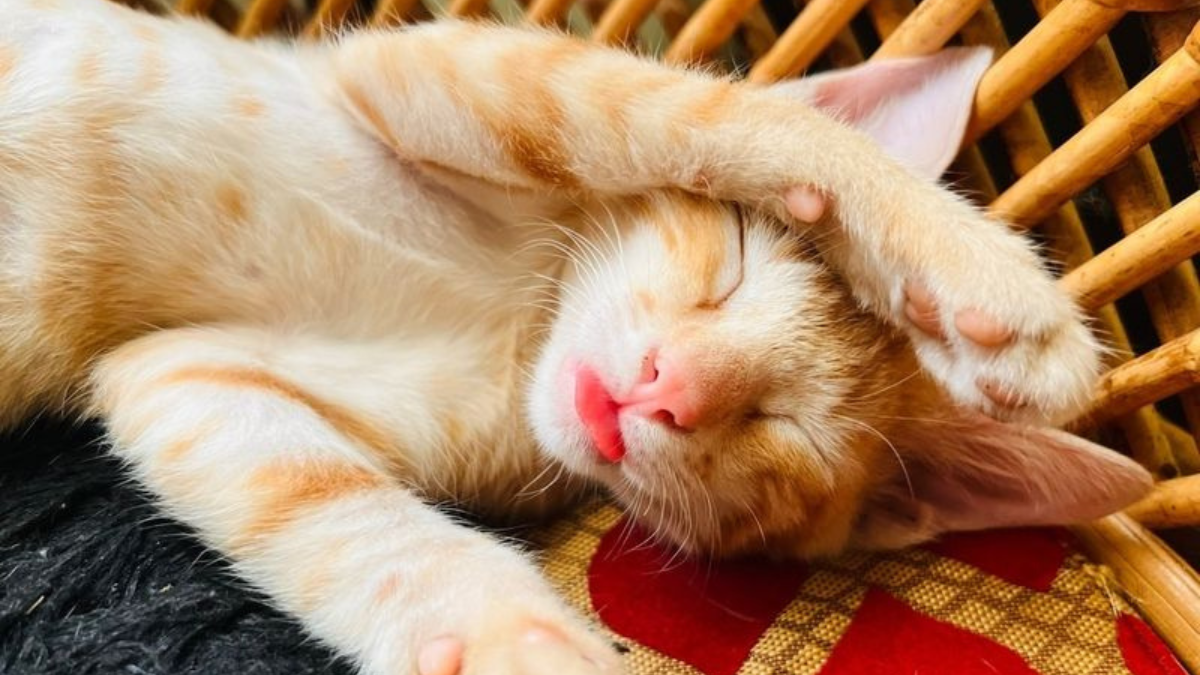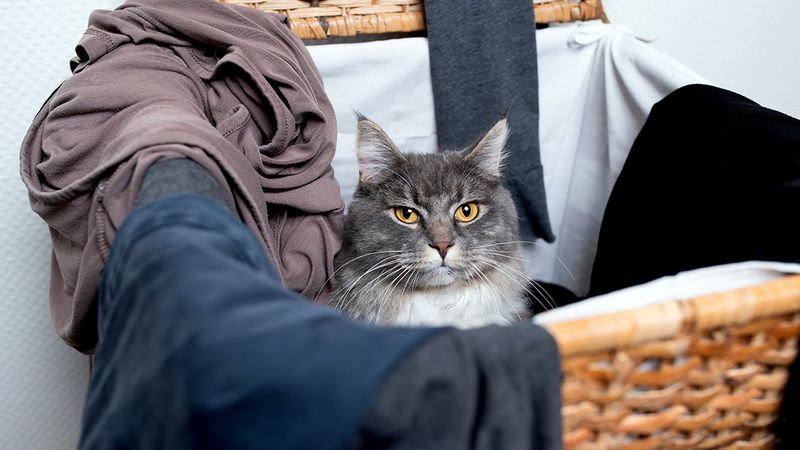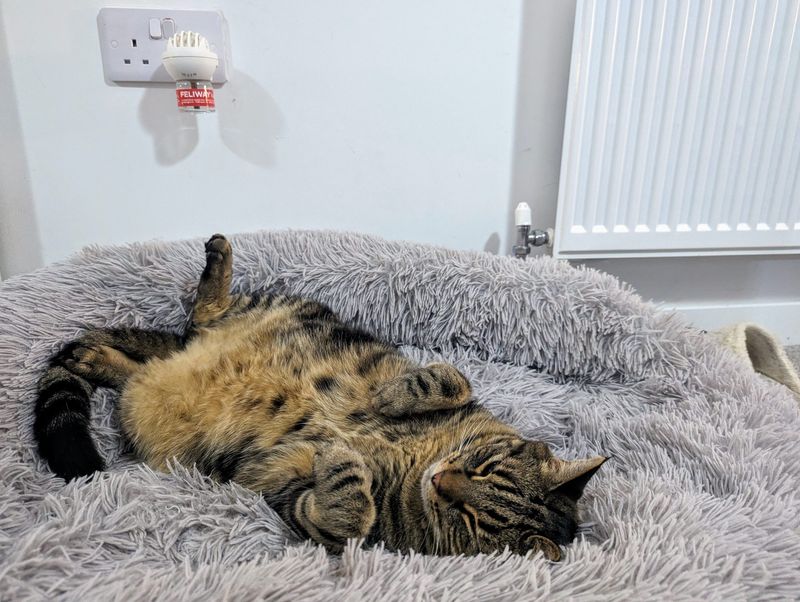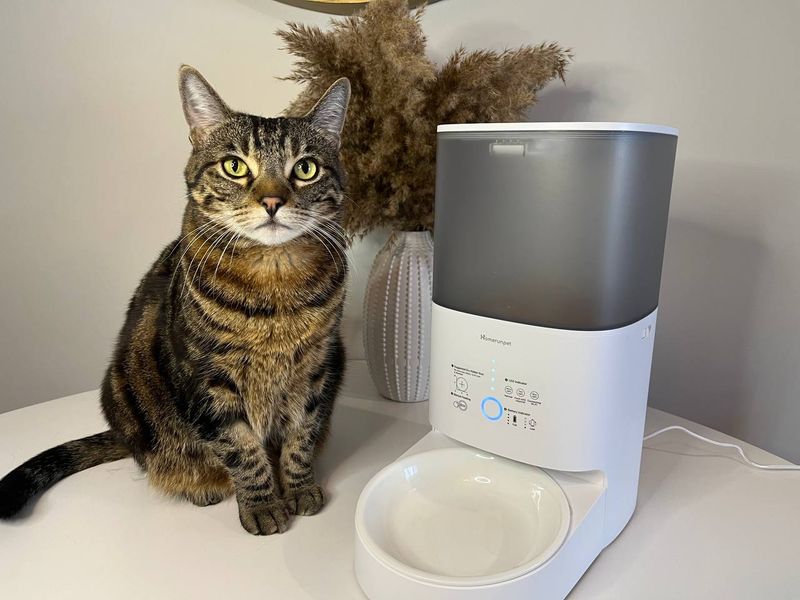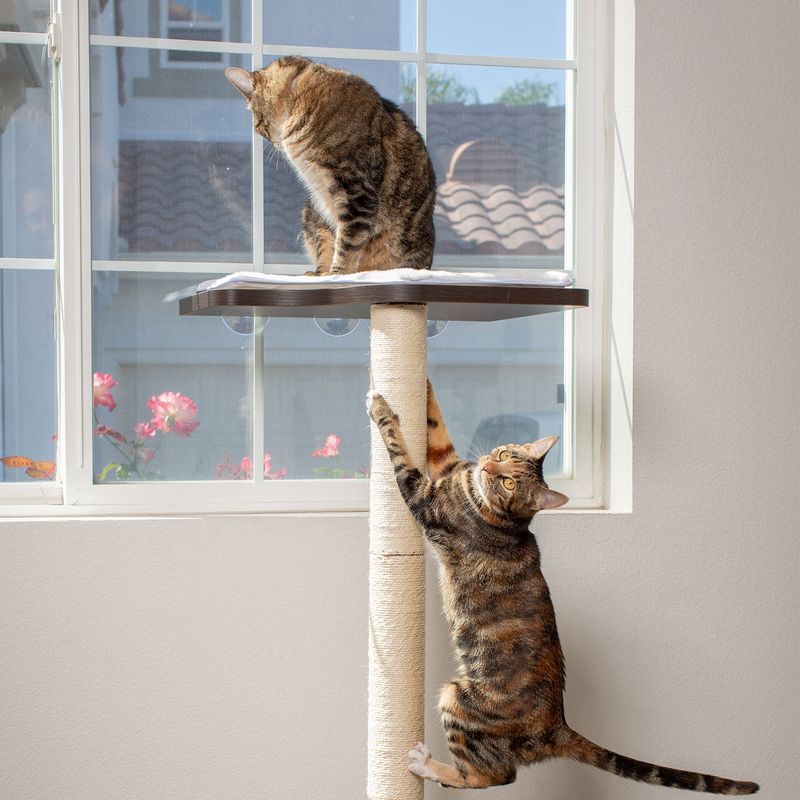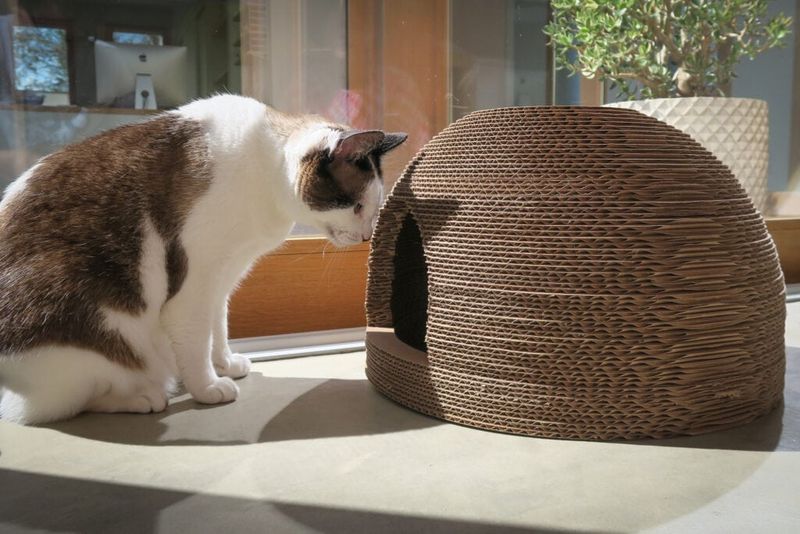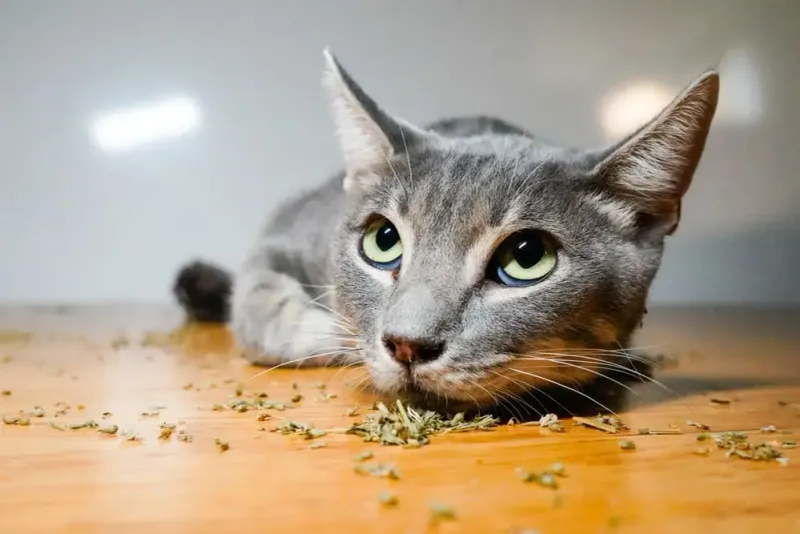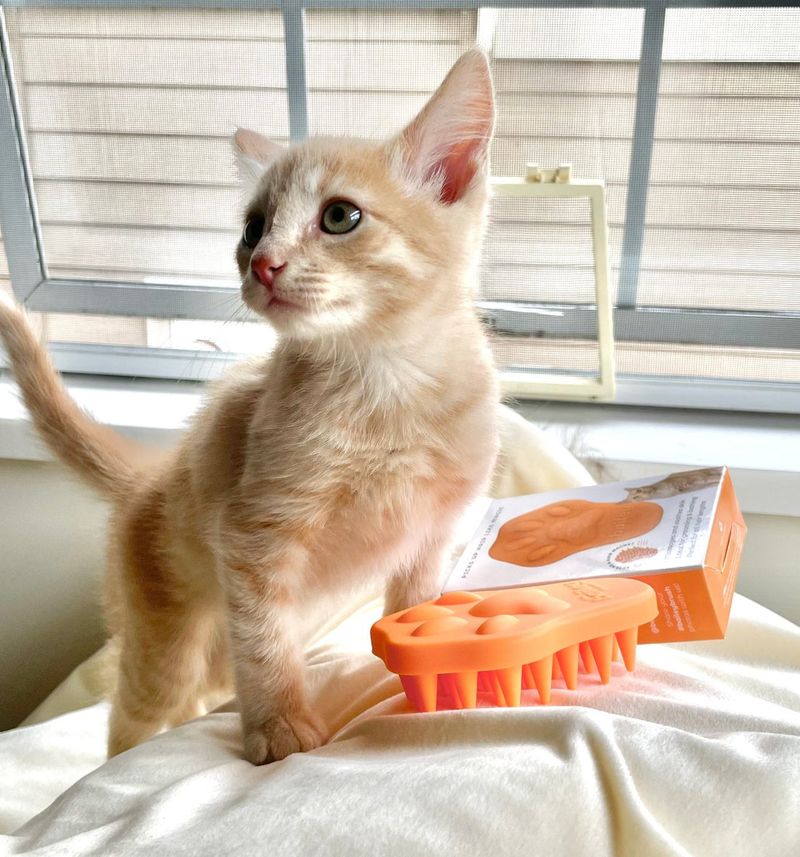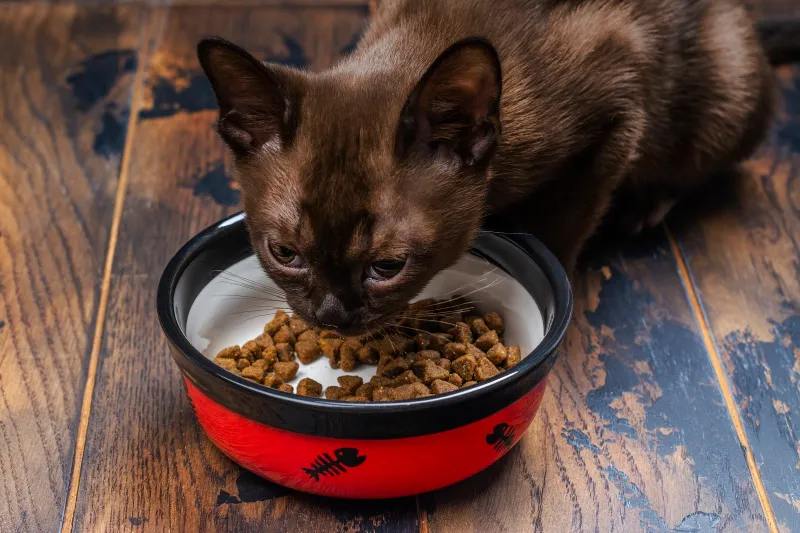📖 Table of Content:
- 1. Familiar-Scented Items
- 2. Pheromone Diffusers
- 3. Consistent Feeding Schedule
- 4. Gentle Background Noise
- 5. Interactive Play Sessions
- 6. Elevated Perches
- 7. Cardboard Scratching Surfaces
- 8. Warm Resting Places
- 9. Calming Herbs and Plants
- 10. Gentle Massage and Brushing
- 11. Predictable Daily Routines
- 12. Quiet Retreat Spaces
Cats are highly sensitive animals that may become stressed by loud thunderstorms, moving to unfamiliar places, or disruptions to their daily routines. Such changes can make them feel anxious or unsettled. Understanding the signs of feline stress is important for providing appropriate care.
Comforting a cat during these challenging moments helps support their emotional and physical well-being. Providing reassurance can reduce anxiety and help restore calm. Different cats may respond better to specific soothing items or techniques based on their personality and age.
From cautious kittens to nervous senior cats, many felines benefit from extra care when facing stressful situations. Establishing a safe and comforting environment promotes a sense of security. This approach encourages relaxation and improves overall quality of life.
1. Familiar-Scented Items
Nothing soothes an anxious cat like the scent of home. A blanket or shirt carrying your scent works wonders during vet visits or when introducing your cat to new environments. The familiar smell reminds them of safety and comfort. Cats have powerful scent glands in their cheeks. Objects they’ve rubbed against contain pheromones that signal security and territory.
Preserving these scent-marked items during transitions helps maintain a sense of normalcy. For maximum effectiveness, rotate familiar items rather than washing them all at once. This maintains a consistent scent profile that reassures your cat that, despite changes, some things remain constant.
2. Pheromone Diffusers
Commercial pheromone products mimic the natural facial pheromones cats release when feeling content. These synthetic versions help reduce anxiety by creating an atmosphere of familiarity and safety throughout your home. Available as plug-in diffusers, sprays, or wipes, these products work silently in the background.
Many veterinarians recommend them for particularly stressful situations like moving, introducing new pets, or during renovation work. Results vary between cats, but many owners report noticeable improvements in anxiety-related behaviors within days. The calming effects are especially pronounced in multi-cat households where tension can escalate during times of change.
3. Consistent Feeding Schedule
Food security forms a cornerstone of feline comfort. Maintaining regular mealtimes gives anxious cats predictability when everything else feels chaotic. Their internal clocks are remarkably accurate, and this reliability becomes an anchor during unsettling times. Automated feeders can help maintain consistency even when your schedule changes.
The familiar sound of the feeder activating provides both routine and positive association. During highly stressful periods, consider offering special high-value treats or meals. This creates positive associations with otherwise frightening situations and provides comfort through familiar flavors and textures that remind them of happier, calmer times.
4. Gentle Background Noise
Soft, consistent sounds mask startling noises that might trigger anxiety in cats. Classical music, nature sounds, or specially designed pet music with frequencies calibrated for feline ears can create a soothing sonic environment. Television or radio voices provide comforting background noise when you’re away.
Many cats find the human vocal patterns reassuring, especially if they’re accustomed to a household with regular conversation. White noise machines prove particularly helpful during thunderstorms or fireworks. The steady sound blocks out unpredictable booms and crashes that typically send cats scrambling for cover, creating an acoustic buffer between your cat and the scary outside world.
5. Interactive Play Sessions
Physical activity releases endorphins that naturally combat stress hormones. A vigorous play session with a wand toy or laser pointer helps anxious cats burn off nervous energy while reinforcing your bond. The hunting sequence of stalking, chasing, pouncing, and ‘killing’ satisfies deep instinctual needs.
This natural behavior cycle provides both physical exercise and mental stimulation that redirects focus away from stressors. Timing matters with anxiety-reducing play. A session before anticipated stressful events—like before visitors arrive or before you leave for work—helps deplete energy reserves. This increases the likelihood that your cat will rest rather than stress during the challenging period.
6. Elevated Perches
Height equals security in the feline world. A tall cat tree or shelf system allows your cat to observe potential threats from a position of safety. This vertical territory becomes especially important during times of change. Window perches offer the added benefit of environmental enrichment. Watching birds, squirrels, and neighborhood activities provides mental stimulation without requiring direct interaction, perfect for the overwhelmed cat.
Strategic placement makes all the difference. Position perches where your cat can observe household activities from a safe distance. This allows them to participate in family life on their own terms, gradually building confidence as they adjust to new situations or recover from upsetting experiences.
7. Cardboard Scratching Surfaces
Scratching serves multiple purposes for stressed cats. The physical action releases tension while simultaneously marking territory with scent glands in their paws. Cardboard scratchers provide the perfect texture for this anxiety-relieving behavior. Horizontal scratchers appeal to cats who stretch forward when scratching, while vertical posts satisfy those who prefer stretching upward.
Having both types available ensures your cat can engage in this comforting behavior however feels most natural. Budget-friendly and replaceable, cardboard scratchers can be placed throughout your home. This network of familiar-smelling scratching stations creates a map of security markers that reassure your cat that they’re in their own territory, even when other aspects of their environment change.
8. Warm Resting Places
Cats naturally gravitate toward warmth, which triggers memories of snuggling with their mother and littermates. Heated beds or pads maintained at body temperature provide a consistent comfort zone that eases muscle tension and promotes relaxation. Self-warming mats containing heat-reflecting materials offer a cord-free alternative. These safety-conscious options warm with the cat’s own body heat, making them ideal for cats who might chew electrical cords when stressed.
Even simple solutions like placing beds in sunny spots or near heating vents can make a difference. The warmth not only soothes physically but also creates positive associations with the space, encouraging your cat to choose that location when feeling vulnerable rather than hiding in less comfortable spots.
9. Calming Herbs and Plants
Catnip affects roughly 70% of cats, producing a euphoric response that temporarily overrides anxiety. For stressed cats who respond to catnip, this natural herb provides 10-15 minutes of blissful distraction from whatever is causing their discomfort. Silver vine and valerian root offer alternatives for catnip-immune cats.
These plants contain different compounds that produce similar calming effects, giving more options for herbal stress relief. Cat-safe grasses like wheat, oat, or barley grass provide both enrichment and stress relief. The act of chewing grass satisfies natural foraging instincts while also aiding digestion—a double benefit since stress often manifests as digestive issues in sensitive felines.
10. Gentle Massage and Brushing
Slow, methodical brushing mimics maternal grooming, triggering relaxation responses in anxious cats. Short sessions with a soft brush stimulate blood flow and release tension, particularly along the back and base of the tail. Facial massages target scent glands around the cheeks and chin.
This gentle touch not only feels good but also helps release natural pheromones that create a sense of security and well-being throughout their environment. Body language determines the ideal approach. Watch for signs of enjoyment like purring and kneading, or discomfort like tail twitching. Following your cat’s cues ensures the experience remains positive, strengthening your bond while providing comfort during stressful transitions.
11. Predictable Daily Routines
Knowing what comes next brings comfort to cats, especially when the world around them feels uncertain. A steady rhythm of meals, playtime, and cuddles builds a secure backdrop that helps anxious cats adapt to change. The morning rituals stand out—whether it’s a breakfast feast followed by play or peaceful moments shared over a cup of coffee, these routines set the tone for the whole day.
Evening wind-down routines signal that it’s time to relax. Activities like a final play session, treat time, or brushing before bed help anxious cats transition to restful sleep rather than nighttime anxiety, which often manifests as inappropriate meowing or hyperactivity when households quiet down.
12. Quiet Retreat Spaces
Every cat needs a designated sanctuary where household hustle never intrudes. A spare room, closet corner, or even a bookshelf converted into a cat nook provides essential respite from overwhelming stimuli. The ideal retreat combines comfort with security features. A soft bed positioned where your cat can see approaching visitors without being easily spotted gives them control over interactions during anxious periods.
Establishing boundaries around these spaces teaches household members and visitors to respect your cat’s need for alone time. A simple rule like ‘if the cat goes to their special place, we leave them be’ empowers your cat with choice and control—crucial elements for managing stress that help them regulate their own comfort levels.
